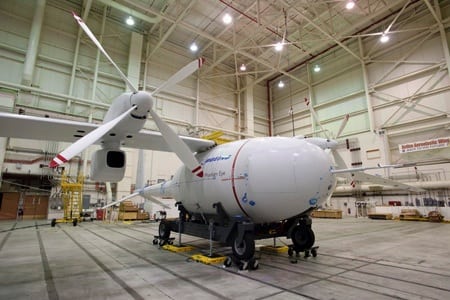 |
| Photo courtesy Boeing |
The Boeing Phantom Eye high altitude long endurance (HALE) unmanned airborne system completed 12 days of ground vibration and structural mode interaction tests this month at NASA’s Dryden Flight Research Center at Edwards Air Force Base, Calif., the company said Thursday. Phantom Eye is being prepared for its first flight, scheduled for later this summer. That debut flight is expected to last between four and eight hours, according to Boeing.
Phantom Eye’s two hydrogen fuel tanks also were successfully filled with nitrogen to test fueling procedures and the aircraft’s full-fuel weight configuration. Phantom Eye has a 150-foot wingspan and is powered by two 2.3-liter, four-cylinder hydrogen engines that each provide 150 horsepower. It is designed to fly at 65,000 feet for up to four days; perform intelligence, surveillance and reconnaissance missions; and serve as a communications relay. It is capable of maintaining the aircraft’s altitude for up to four days while carrying a 450-pound payload.
According to Boeing, it also is developing a larger HALE that will stay aloft for 10 days and carry payloads of more than 2,000 pounds. HALE is designed to stay on station for 10 days with a 600-pound payload and 500-pound communications core. Typical payloads include multiple sensor packages for monitoring and tracking mission roles. In addition, when properly equipped, Phantom Eye can relay information across its 800-nautical-mile line of sight horizon, Boeing said.